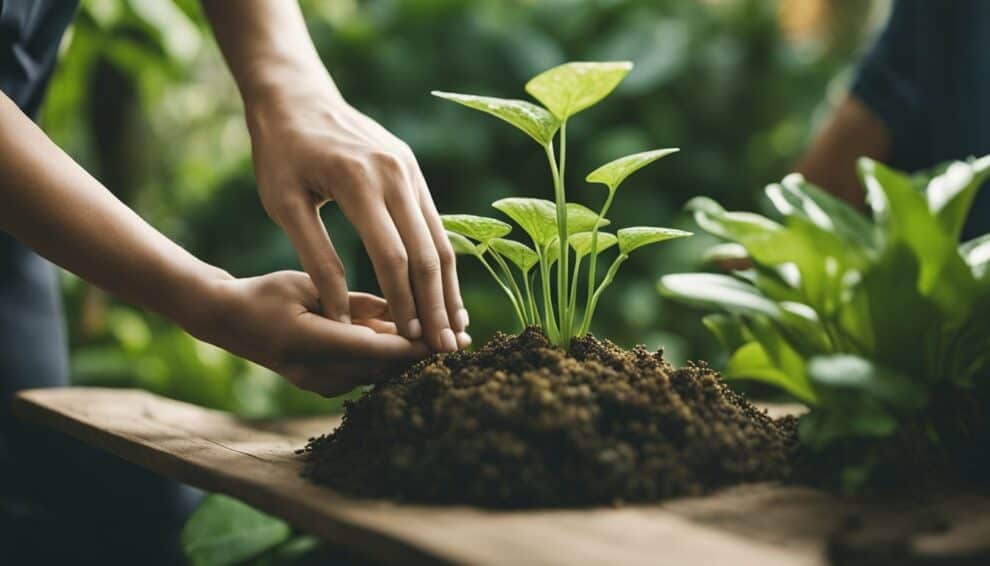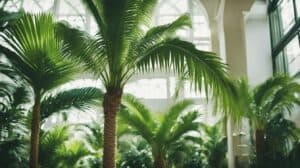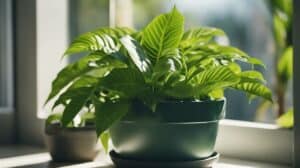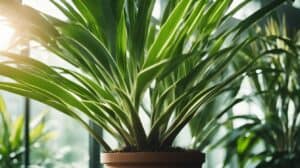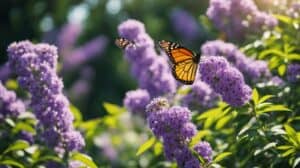Dioscorea Elephantipes, also known as the Elephant’s Foot Plant, is a unique and fascinating plant that is becoming increasingly popular among plant enthusiasts.
This plant is native to South Africa and is a member of the yam family.
The Elephant’s Foot Plant is known for its unusual appearance, with a large, bulbous stem that resembles an elephant’s foot.

Caring for the Elephant’s Foot Plant can be a challenge, as it requires specific conditions to thrive.
This plant prefers a warm, dry climate and well-draining soil.
It is also important to avoid overwatering, as the Elephant’s Foot Plant is susceptible to root rot.
Despite these challenges, many plant lovers find the Elephant’s Foot Plant to be a rewarding addition to their collection.
In this article, we will explore the unique characteristics of the Dioscorea Elephantipes plant and provide tips for caring for this fascinating species.
Whether you are a seasoned plant enthusiast or a beginner, this article will help you understand the care requirements of the Elephant’s Foot Plant and how to ensure its health and longevity.
Understanding Dioscorea Elephantipes
Species Overview
Dioscorea Elephantipes, commonly known as the Elephant’s Foot Plant, is a unique and fascinating succulent plant that belongs to the Dioscoreaceae family.
It is native to South Africa and is known for its unusual, swollen stem that resembles an elephant’s foot.
The plant can grow up to 1 meter tall, and its stem can reach a diameter of up to 30 centimeters.
The Elephant’s Foot Plant is a slow-growing plant that can live for several decades if properly cared for.
It is a popular plant among collectors due to its unique appearance and is often used as a decorative plant in gardens and homes.
Natural Habitat
The Elephant’s Foot Plant is native to the arid regions of South Africa, where it grows in rocky, well-draining soils.
It is adapted to survive in harsh conditions and can withstand long periods of drought.
The plant is also known for its ability to store water in its swollen stem, which it uses to survive during periods of water scarcity.
In its natural habitat, the Elephant’s Foot Plant is often found growing alongside other succulent plants such as cacti and agave.
It is also known to attract a variety of pollinators, including bees, butterflies, and moths.
Overall, the Elephant’s Foot Plant is a unique and fascinating plant that is well-suited for growing in arid regions.
Its unusual appearance and ability to store water make it an ideal plant for collectors and gardeners alike.
Cultivation Guidelines

Soil Requirements
Dioscorea Elephantipes, commonly known as the Elephant’s Foot Plant, requires a well-draining soil that is rich in organic matter.
It is recommended to use a mixture of sand, perlite, and peat moss to ensure proper drainage.
The pH level of the soil should be between 6.0 and 7.0, which is slightly acidic to neutral.
It is important to avoid overwatering and waterlogging the soil, as this can lead to root rot.
Watering Practices
The Elephant’s Foot Plant prefers to be kept on the drier side, so it is important to not overwater it.
Water the plant only when the top inch of the soil is dry to the touch.
During the winter months, when the plant is dormant, reduce watering to once every two to three weeks.
It is important to avoid getting water on the leaves and stem of the plant, as this can lead to fungal growth.
Light and Temperature Needs
The Elephant’s Foot Plant prefers bright, indirect light. It can tolerate some direct sunlight, but too much can scorch the leaves.
The plant also prefers warm temperatures between 60°F and 80°F.
It is important to protect the plant from frost and cold drafts, as this can damage the leaves and stem.
Overall, with the right soil, watering practices, and light and temperature conditions, the Elephant’s Foot Plant can thrive and make a beautiful addition to any indoor or outdoor space.
Maintenance and Care

Fertilization Schedule
Dioscorea Elephantipes requires regular fertilization to thrive.
During the growing season, which typically lasts from spring to fall, the plant should be fertilized every two weeks with a balanced fertilizer.
It is important to dilute the fertilizer to half strength to avoid burning the plant’s roots.
During the winter months, the plant’s growth slows down, and it requires less fertilizer.
Fertilize the plant once a month with a balanced fertilizer diluted to half strength.
Pest and Disease Management
Dioscorea Elephantipes is generally a hardy plant, but it can be susceptible to pests and diseases. Here are some tips to keep your plant healthy:
-
Spider Mites: These tiny pests can be a problem, especially in dry conditions.
To prevent spider mites, mist the plant regularly and keep the humidity high around the plant.
If spider mites are detected, treat the plant with a commercial insecticidal soap.
-
Scale Insects: These insects can be identified by their hard, shell-like covering.
They can be removed by hand or treated with a commercial insecticidal soap.
-
Root Rot: Overwatering can cause root rot, which can be identified by yellowing leaves and a foul smell.
To prevent root rot, make sure the plant is not sitting in standing water and that the soil is well-drained.
By following these simple maintenance and care tips, your Dioscorea Elephantipes plant will thrive and be a beautiful addition to your home or garden.
Propagation Techniques

Dioscorea Elephantipes can be propagated through both seeds and offsets.
Propagation through Seeds
Seeds can be collected from mature plants during the fall season. After collecting the seeds, they should be allowed to dry for a few days before planting.
Plant the seeds in well-draining soil and cover with a thin layer of sand. Keep the soil moist and warm, and the seeds should germinate within a few weeks.
Propagation through Offsets
Offsets, also known as bulbils, are small bulbs that grow on the stem of the plant. These can be removed and planted in a separate pot to grow a new plant.
Make sure the offset has roots before planting it in well-draining soil. Water the soil thoroughly and keep it moist until the plant establishes itself.
It is important to note that Dioscorea Elephantipes is a slow-growing plant and may take several years to reach maturity.
Patience is key when propagating this plant.
Frequently Asked Questions

What type of soil is best for growing Dioscorea elephantipes?
Dioscorea elephantipes prefers well-draining soil that is rich in organic matter.
A mixture of peat moss, sand, and perlite is ideal for promoting healthy root growth.
Avoid using heavy soils or those that retain too much moisture, as this can lead to root rot.
How often should I water my Elephant’s Foot plant?
These plants are adapted to survive long periods of drought, so it’s important not to overwater them.
Allow the soil to dry out completely between waterings, and then water thoroughly until water drains out the bottom of the pot.
During the winter months, reduce watering frequency to once every 2-3 weeks.
What are the ideal light conditions for an Elephant Foot plant indoors?
Dioscorea elephantipes prefers bright, indirect light. Avoid placing the plant in direct sunlight, as this can scorch the leaves.
A north-facing window or a spot near a bright, filtered light source is ideal.
Can Dioscorea elephantipes plants be propagated, and if so, how?
Yes, these plants can be propagated by stem cuttings or by dividing the tuber.
Take stem cuttings in the spring or summer and plant them in a well-draining soil mix.
To divide the tuber, carefully remove it from the soil and cut it into sections, making sure that each section has at least one bud.
Plant each section in its own pot with well-draining soil.
What are common pests or problems to look out for when caring for an Elephant’s Foot plant?
Spider mites and mealybugs can be a problem for these plants, especially if they are kept in dry conditions.
Keep an eye out for any signs of infestation, such as webbing or cottony masses on the leaves.
If an infestation is detected, treat the plant with an insecticidal soap or neem oil.
How should I fertilize my Dioscorea elephantipes to promote healthy growth?
These plants do not require frequent fertilization, but a balanced, all-purpose fertilizer can be applied once a month during the growing season.
Avoid over-fertilizing, as this can lead to excessive foliage growth at the expense of tuber development.






